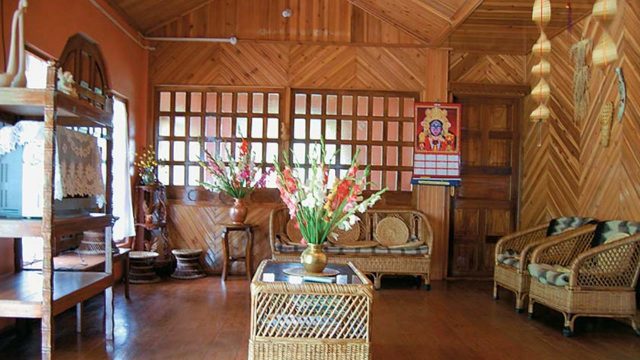There’s something quite thrilling about reaching your destination and knocking at the hotel door, while dripping from head to toe. The temperature being 15°C or thereabouts in the hamlet of Tinchulay — a little over 12 hours ago, we had been stewing in Calcutta’s 40 degree heat — some happy shivering added to the overall effect of zaniness.
No, it hadn’t been raining. That would have been too commonplace. On the way from Siliguri to sleepy Tinchulay, a seductress called Teesta had led us astray, and we ended up rafting in the river’s wild waters for over two hours. Result: shock and awe for the Gurung family, not to mention the dilemma of whether to serve us a very late lunch or a very early dinner.
The Gurungs run the only lodge in the village, which is only 32km from Darjeeling and 43km from Kalimpong, but light-years away from the touristy hustle and bustle of these two hill stations. When the WWF declared Tinchulay (three ‘chulhas’ or chimneys after the three peaks that surround the village) a model village in 2000-2001, it needed to arrange for places for tourists to stay. The Gurungs, the Bhujels and the Syangbos were the three families that volunteered to turn their residences into homestays. It’s been eight years since, and clearly, the Gurungs have emerged as the most enterprising and resourceful. The Gurung Guest House now has four four-bedded rooms and four double-bedrooms and one cottage for couples. This last, we learnt, is frequently occupied by the Gorkha separatist leader, Bimal Gurung, who also happens to be distantly related to the proprietors of the lodge.
The peace around Tinchulay is unfamiliar, alien to us, the city-bred, our ears having become attuned to traffic noises, shrill cries of street vendors, loud pub music. When was the last time I heard a bird twitter in my Calcutta neighbourhood? The sound of my own breathing catches me by surprise. Night has fallen over Tinchulay, home to no more than 17 families. There’s a power cut. I don’t remember being thankful for a power cut before. Sitting in the balcony of our large four-bed room, I see Kalimpong staring back at us, ablaze with what seems like a billion fireflies. A gong at the local monastery rings out, to which the neighbourhood canines respond by practising their scales.
Morning brings light and colour, and Kalimpong, which had appeared to come within touching distance the previous night, has receded again. We decide to cover the distance and visit an orchid nursery and the Durpin Dara monastery in Kalimpong. The journey is as interesting as the visits themselves. On the way to Kalimpong, we are taken along a route that runs through several tea gardens and the Gurungs’ farm in Bara Mangwa. It is here that the family grows cereals, vegetables and fruits. There is a small tea plantation, an aviary and fruit processing units. As a result, the only ‘bought’ ingredients in the gargantuan meals we were fed over our three-day stay were oil, salt, pulses and a few spices. To buy their monthly supplies, the Gurung men go to Kalimpong or the Takdah bazaar three kilometres away.
It is dark when we make our way back, and Milan, our driver and guide (who, by his own admission, knows everyone from Tinchulay to Kalimpong) takes a sudden sharp turn to the left. And just like that, we are in a jungle. The darkness is so thick it could be cut with a knife, and Milan’s idea of entertaining us is to talk about leopards and wild cats that can be caught in the headlights at any moment. A couple of kilometres of bumpy tract and silent amazement, we emerge from the jungle and find ourselves at the doorstep of the Gurung Guest House.
Incredibly, the jungle is right next to the homestay and our hosts encouraged us to take a trek. Our guide this time was a teenaged Gurung with a large repertoire of Hindi film songs. As we were about to leave, one of his aunts brought out bamboo sticks, one for each of us. Evidently, the Gurungs didn’t think much of our physical fitness. But we went ahead, in Gandhi-meets-Tenzing Norgay fashion, to make the medium-difficulty trek to the caves.
Tinchulay offers a great view of the Kanchenjungha, but the best time for that is just after the rains, from late September to November. We were in Tinchulay in May, and so the K-beauty evaded us. That, however, took nothing away from the sunrise and sunset we watched from the clearing next to the local monastery. Very close to this was a small, double-storeyed memorial to a Gurung couple and their sons. It was a strangely desolate place, and provided the perfect refuge for reading a book and watching the evening descend and the Kalimpong hills light up.
The Gurungs also take you around the hamlet to look at homegrown orchids, poultry farms, tea-processing and biogas units, and everywhere there are chubby, playful and mischievous children. The final evening is reserved for tea with the family and a tour around the kitchen and living quarters. We came back with honey, squash, marmalade and pickles from our hosts’ farm, and, of course, the pristine white silk scarf that is the Gurungs’ parting gift to every guest.
Tinchulay is 32km from Darjeeling and 43km from Kalimpong. Contact: Gurung Guest House (9733326309) or Help Tourism (9832088984). Tariff: Rs 800 (double), Rs 1,000 (four-bedded rooms), Rs 2,000 (cottage). Meals cost extra.




